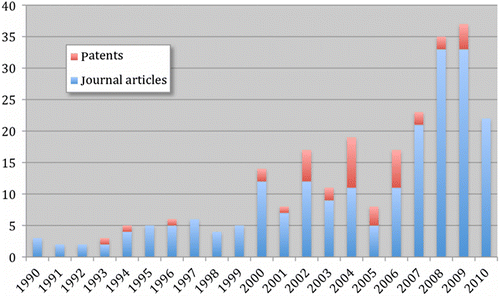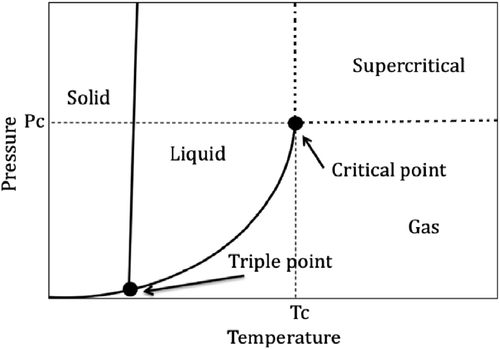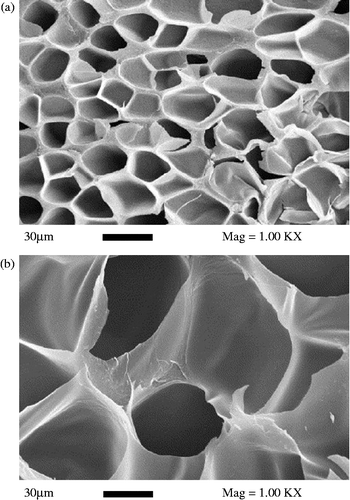Figures & data
Figure 1 Illustration of the annual number of scientific publications and patents since 1990. Data analysis completed using the SciFinder Scholar search system on 29 September 2010 using the search terms ‘cellulose’ and ‘scCO2’ and its synonyms such as ‘supercritical carbon dioxide’ and ‘wood’.

Figure 3 P–T phase diagram of a typical compressible fluid. T c, critical temperature; P c, critical pressure.

Figure 4 SEM micrographs of aerocellulose from five Avicel/NaOH/water gelled solutions (a) without Simusol (b) with 0.5% Simusol and (c) with 1% Simusol. Reprinted with permission from Gavillon and Budtova (Citation2008). Copyright 2008 American Chemical Society.

Figure 5 Different gel states of bacterial cellulose obtained from G. xylinum: aquagel vs. aerogel (left). Due to the extremely low density of the material, electrostatic charge is sufficient to make the aerogel stick to a finger (right). Reproduced with permission from Liebner et al. (2010), Copyright Wiley-VCH Verlag GmbH & Co. KGaA.

Figure 6 Scanning electron microscopy (SEM) pictures at various magnifications (200 × , 500 × and 3000 × ; from left to right) of a scCO2-dried aerogel from bacterial cellulose. Reproduced with permission from Liebner et al. (2010), Copyright Wiley-VCH Verlag GmbH & Co. KGaA.

Figure 7 Membrane section T = 65°C, P = 100 bar: (a) 20% (w/w); (b) 5% (w/w). Reprinted from Reverchon and Cardea (Citation2004). Copyright 2004 with permission from Elsevier.

Figure 8 Effect of pressure on the foam structure of cellulose acetate (temperature = 230°C, contact time = 480 min) (a) 250 bar; (b) 100 bar. Reprinted from Reverchon and Cardea (Citation2007). Copyright 2007 with permission from Elsevier.

